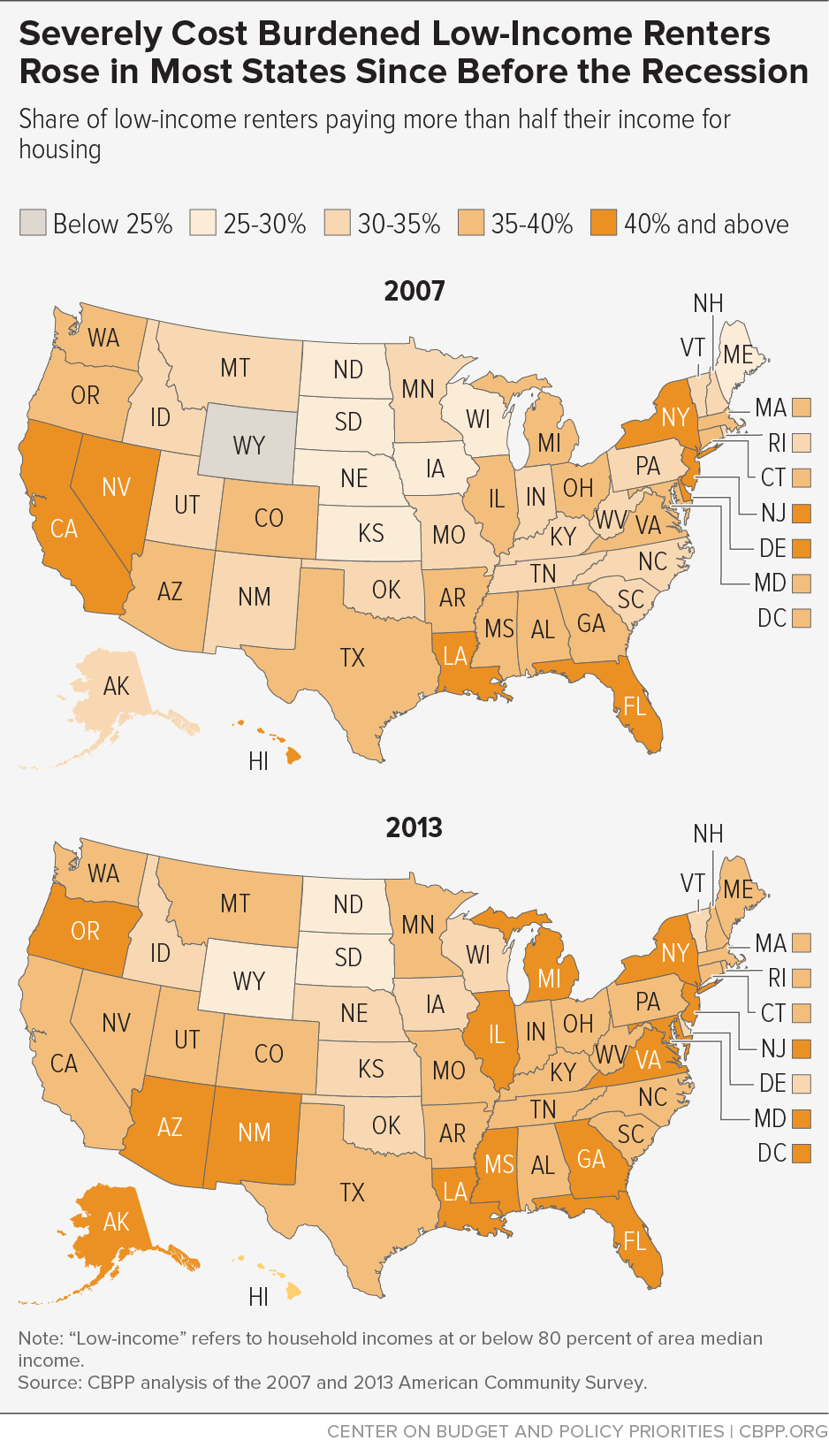BEYOND THE NUMBERS
Severe housing affordability problems have worsened across the country since before the Great Recession, our revised state fact sheets on federal rental assistance show. Between 2007 and 2013, the number of low-income renters paying more than half of their income for housing rose in every state but Delaware. Moreover, the share of low-income renters with such severe rent burdens rose in 45 states and the District of Columbia (see maps).
As these maps show, housing became increasingly unaffordable for low-income renters across much of the South, Midwest, and Mid-Atlantic. But Maine experienced the biggest jump: nearly 40 percent of low-income Maine renters paid over half their income for rent and utilities in 2013, compared to less than 30 percent in 2007.
The share of low-income households with severe rent burdens fell in five states — Arkansas, California, Delaware, Hawaii, and Nevada — due to a surge in renters resulting from the home mortgage foreclosure crisis. But this doesn’t mean that affordability problems have improved there. The number of low-income renters with severe rents still rose or stayed roughly the same in these five states between 2007 and 2013. Rather, the share fell because the number of low-income renters grew faster than the number paying more than half of their income for housing.
In every state, at least one in four low-income renters paid more than half of their income for housing in 2013. Over 10 million low-income renter households had such severe rent burdens in 2013.
Unfortunately, less than a quarter of low-income families eligible for federal rental assistance receive it due to funding limitations, and few states provide additional help. Sequestration cuts enacted under the 2011 Budget Control Act have shrunk limited federal resources even further. Our new fact sheets provide details on who receives help in each state, as well as the many households still struggling to keep a roof over their heads.

